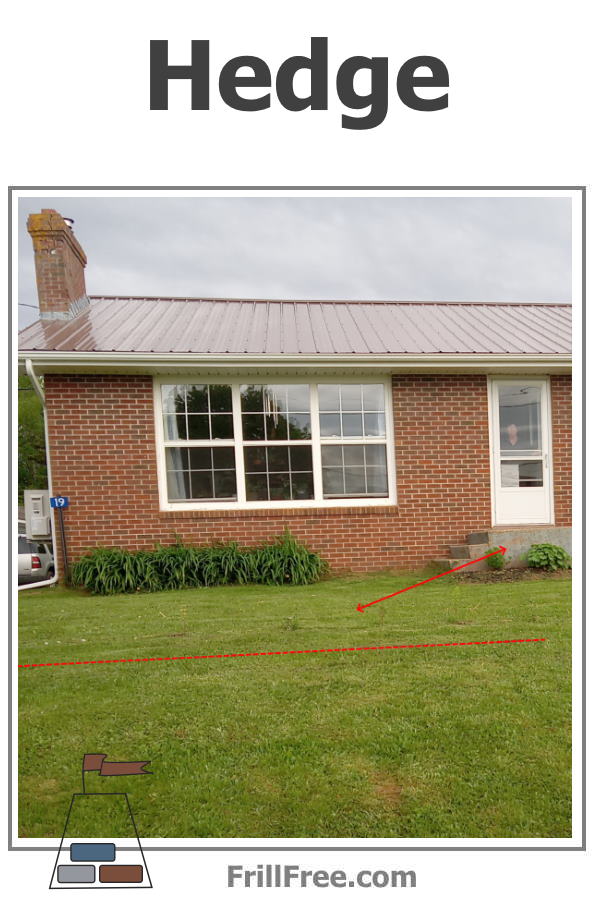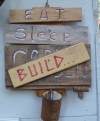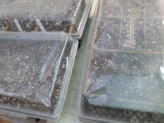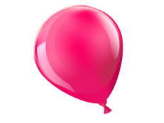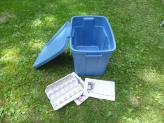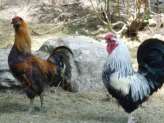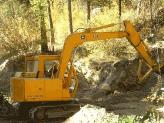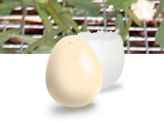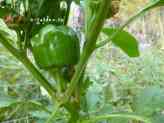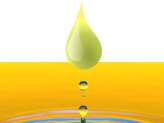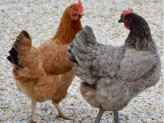Hedge
More than just a row of bushes
More than just a row of shrubs or bushes, a hedge functions as snow control, bird attractant and nectar for pollinators, all at the same time. Well, maybe not at the exact moment, but spread throughout the year, all of these forces for good will become evident.
In the picture above, the dotted red line indicates where the plugs have been planted in my hedge - next year they will slowly get established, then they'll explode into growth.
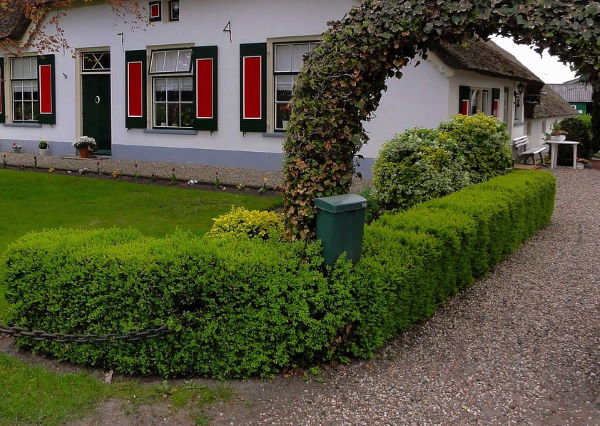 Lovely hedge in front of a house in the Netherlands, using boxwood
Lovely hedge in front of a house in the Netherlands, using boxwoodCreating a hedge can vary greatly in terms of cost and complexity depending on several factors. Here are some considerations to help guide you through the process:
- Type of Plants: Different plants vary in cost and maintenance needs. Decide on the type of hedge based on your climate, the desired height, and the level of maintenance you are willing to commit to.
- Size and Length: The size (both height and thickness) and length of the hedge will impact the number of plants required, hence affecting the overall cost.
- Soil and Site Preparation: Depending on your current soil conditions, you might need to invest in soil improvement. Preparing the ground might involve clearing existing vegetation, tilling, and fertilizing.
- Planting Method: You can plant hedges from seeds, cuttings, or young plants (bushes or saplings). Starting from seeds or cuttings can be less expensive but will take longer to establish.
- Labor Costs: If you're hiring professionals to plan and plant the hedge, labor costs will increase the total expense. Doing it yourself can save money, though it requires time and effort.
- Maintenance: Consider the ongoing maintenance costs, such as watering, pruning, pest control, and fertilization. Some plants need more frequent trimming and care than others.
- Purpose: Decide the purpose of your hedge (e.g., privacy, decorative, windbreak) as this can influence the type and arrangement of plants used.
By evaluating these aspects, you can determine a suitable approach that balances your budget with your hedging goals.
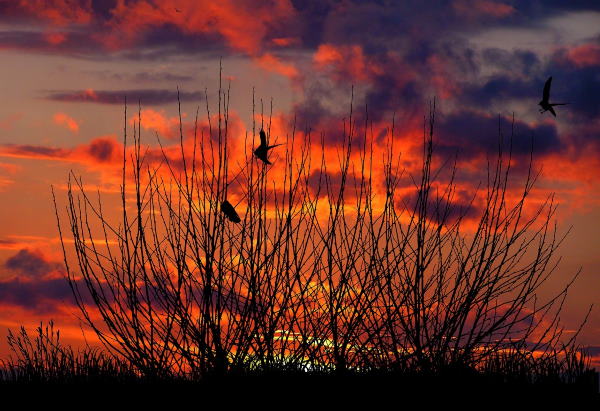 A deciduous hedge at sunset with birds using it for shelter
A deciduous hedge at sunset with birds using it for shelterDeciduous hedges - those that lose their leaves in the fall - provide a buffer against those cold winter winds, but allow the air to move through them, instead of banging against them forcefully.
A row of bushes with small trees interplanted will attract birds all year, especially in those cold winter months, if you choose your hedge plants carefully. Effective hedges will contain enough cover for small birds to find shelter in the winter, and for nesting sites in summer.
Low hedges stop the soil from eroding on the side away from the wind, where the air movement is slower.
Evergreen hedges, like arborvitae or other plants that don't lose their leaves, will stop even more wind, but they need to be planned with their mature spread in mind.
They can also planted in a diagonal design, spaced apart so the wind will be slowed, giving more shelter than a single row alone. Informal hedges of many different species of plants are much more beneficial, due to the sheer biodiversity they contain.
In a short sighted effort to increase productivity, the government in the UK gave incentives to farmers to remove the old hedges that separated out all the individual fields, originally owned by many landowners.
The effect was what's known as 'scouring' where the wind takes all the soil away and deposits it elsewhere.
There is no going back once the hedges have gone. Even trying to replace them is a wasted effort, they can't get established due to the wind.
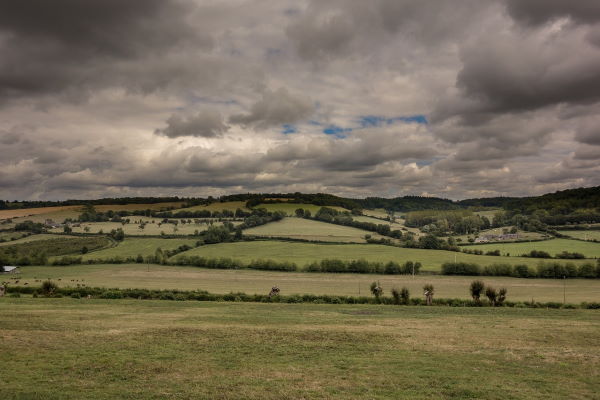 Hedges criss crossed the landscape until the government stepped in
Hedges criss crossed the landscape until the government stepped inA privacy hedge of multiple species and types of willows, planted as whips or plugs in early spring, will quickly double in size, providing a screen of lush greenery in summer and an elegant tracery of slender stems in winter.
The snow control part of the equation will be apparent once the plants attain their full size, and the winter winds blow.
In some areas, there is a widespread use of portable snow fencing, but hedges have a distinct advantage; they are rooted into the ground and hold the soil and snow in place.
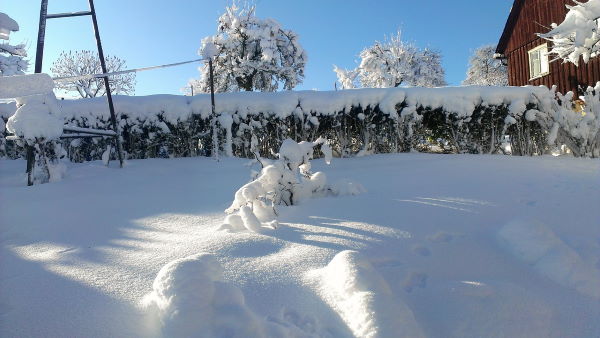 A hedge demonstrates how it holds the snow in place
A hedge demonstrates how it holds the snow in placeBirds will quickly find shelter in hedges that have multiple types and species of plants, some with berries, others with thorns as protection against predators.
Any of the plants you choose that have flowers will attract many types of insects, some of them beneficial, others not so much. The not so beneficial ones will become food for yet more insects, or even larger animals, like possums, skunks, and birds. The shrubs will attract the pests, drawing them away from your crops.
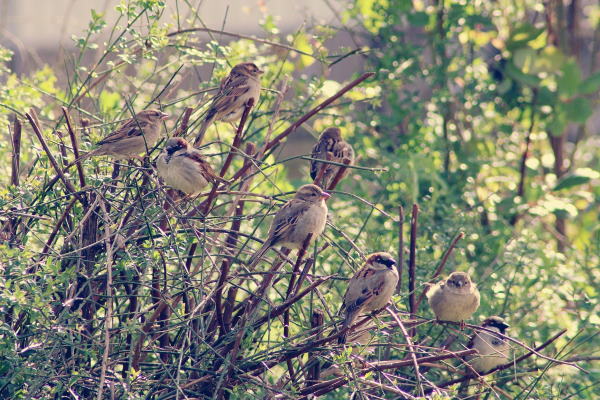 Birds use hedges as shelter and a food source, depending on the time of year and the species of shrubs
Birds use hedges as shelter and a food source, depending on the time of year and the species of shrubsStarting the plan to build a hedge begins with the selection of plants, and where to plant them.
Preparing the area can be complex, like digging out the sod and weeds in a lawn, or just digging single holes to plant plugs into.
Cover the surrounding area with cardboard and a layer of wood chips to hold it down and you have a simple and effective method in play. Topping up the wood chips once a year, and maybe sprinkling some worm castings or liquid compost tea on the established shrubs will be the most intensive maintenance you'll do.
I prefer the second method, with it's no dig approach. The less disturbance of the area, the better the prevention of soil erosion.
My little hedge project is in the front of my house, with a curve, just to fit the area. I interplanted several kinds of willows, some red osier dogwood, and russet buffaloberry, mostly to use as crafting materials when they reach full size.
They are planted a few feet apart, with no thought given to their mature size, so it may entail some moving around as they grow to fit them into the scheme. Time will tell!
What are the best plants for a hedge?
What are the best plants for a hedge?
Common choices for hedges include arborvitae, boxwood, privet, and yew. Deciduous plants include willows, roses and berry producing plants. If you plant native plants, they will come, as in, the birds and pollinators endemic to your area.
How much will the plants cost?
How much will the plants cost?
Planting small plants takes longer, but is much cheaper. I paid around $1 - $2 for plugs, from a mail order nursery. I've seen very economical plants from different places, just make sure they are what you want, and if you're looking for native plants, ask about the provenance.
